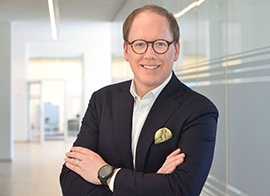February 28, 2022
Bad Homburg, Germany
Exane BNP Paribas – Virtual Global Roadshow
February 28 – March 01, 2022
March 23, 2022
Bad Homburg, Germany
Kepler Cheuvreux - Virtual German CEO Tour
March 29, 2022
Bad Homburg, Germany
Exane BNP Paribas – Virtual 3rd MedTech CEO Conference
March 31, 2022
Bad Homburg, Germany
Conference Call on the acquisition of Ivenix and majority stake in mAbxience
Live Webcast
April 01, 2022
Bad Homburg, Germany
Stifel Europe Bank AG – Virtual Roadshow Nordics
Whistleblowing system
Reports on possible humar rights or other types of compliance violations can be reported around the clock, either anonymously or by name, via our whistleblower system*:
Toll-free number:
+49 (0) 800-1401519
Toll number:
+49 (0) 30-58943054
Contact
Fresenius SE & Co. KGaA
Else-Kröner-Str. 1
61352 Bad Homburg
Germany
humanrights@fresenius.com
What do I have to do if I want to receive my dividend in cash?
In this case, you do not need to do anything.
When will I receive my dividend in cash?
The cash dividend is expected to be paid on June 13, 2022. This later than usual date is due to the technical settlement process related to the scrip dividend.
Should you opt for the scrip dividend, the new Fresenius shares are expected to be booked into your securities accounts on June 13, 2022, too.
Fresenius Kabi announced today that it has received 510(k) regulatory clearance from the U.S. Food and Drug Administration (FDA) for its wireless Agilia® Connect Infusion System which includes the Agilia Volumetric Pump and the Agilia Syringe Pump with Vigilant® Software Suite-Vigilant Master Med technology. Both pumps are the first to be cleared by following TIR101 standards, which were developed by the Association for the Advancement of Medical Instrumentation (AAMI) in 2021. The product offering for hospitals and clinics enables the centralized distribution of drug libraries, warehousing of infusion data for reporting and analysis, and wireless maintenance and calibration of devices. The clearance is an important milestone for the company’s infusion therapy business in the U.S.

